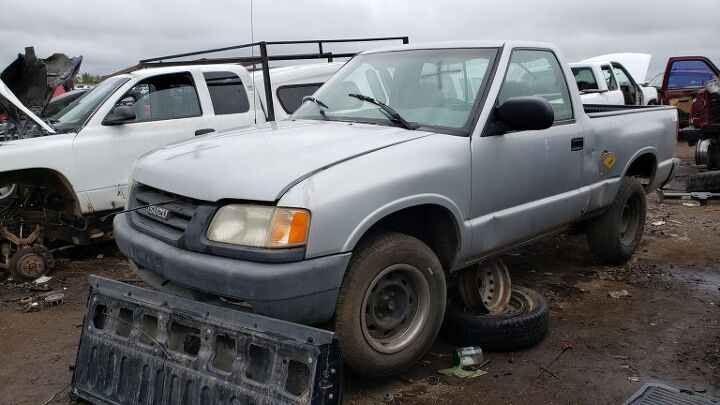#sonoma
Junkyard Find: 1996 Isuzu Hombre
Some of the most interesting examples of GM badge engineering during the last few decades involved the Isuzu brand; first, the Chevrolet LUV pickup ( Isuzu Faster) arrived during the late 1970s, followed by the Chevrolet/Geo Spectrum ( Isuzu Gemini) and Geo Storm (Isuzu Impulse), and finally the Trailblazer-based Isuzu Ascender. Mixed in there was the Isuzu-ized second-gen Chevy S-10, also known as the Hombre.
You won’t find many Hombres in your local wrecking yard, but I kept my eyes open for one until this ’96 showed up in Denver.
A Selective History Of Minitrucks, Part Two: The Empire Strikes Back, Then Gives Up
In Part One of this minitruckin’ history, we covered how the Big 3 provided their dealers with “captive import” minitrucks from Mazda, Isuzu, and Mitsubishi during the Seventies. By 1975 or thereabouts, both GM and Ford were convinced that the small-pickup market was not a fad and began digging their own products out of the parts bin.
The Chevrolet S-10/GMC S-15 was a sort of truck version of the A-body (later G-body) intermediate. While it’s not dimensionally identical to the older sedans, it’s possible to swap much of the running gear between those two vehicles, particularly ahead of the firewall. The Ford Ranger arrived a few months after the S-10, a few inches smaller in most dimensions and looking remarkably ungainly compared to its sleek GM competitor. Those of you who followed the minitrucking hobby in the Nineties will recall that the Ranger was conspicuous by its absence; “domestic” minitruckers were almost exclusively loyal to the S-10/S-15. Part of that was due to the Twin-I-Beam’s reluctance to accept a lowering kit and/or airbags, but much of it was the Ranger’s hokey, hick-ish appearance compared to the S-10.
So what did that mean for the captive import trucks?

















Recent Comments